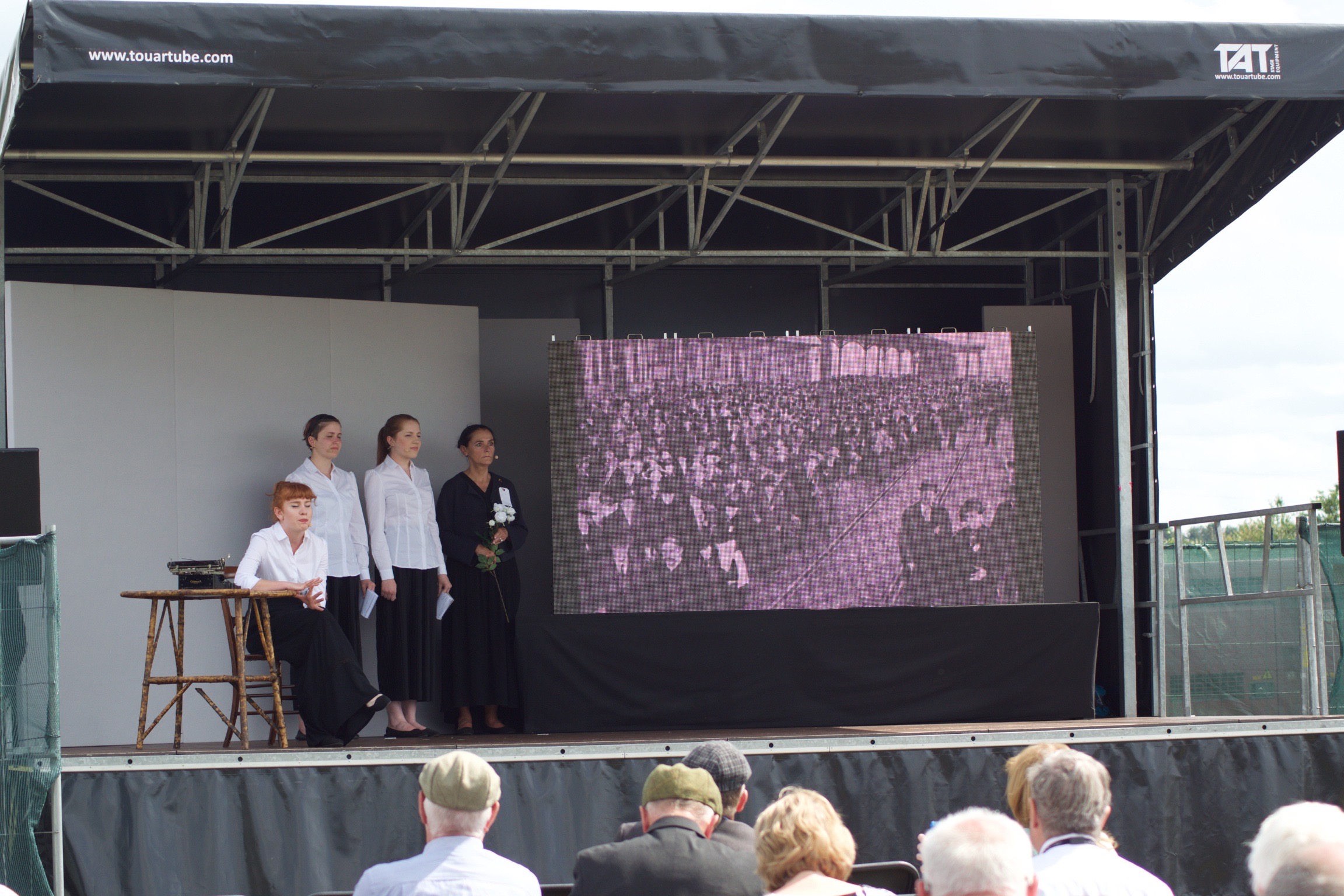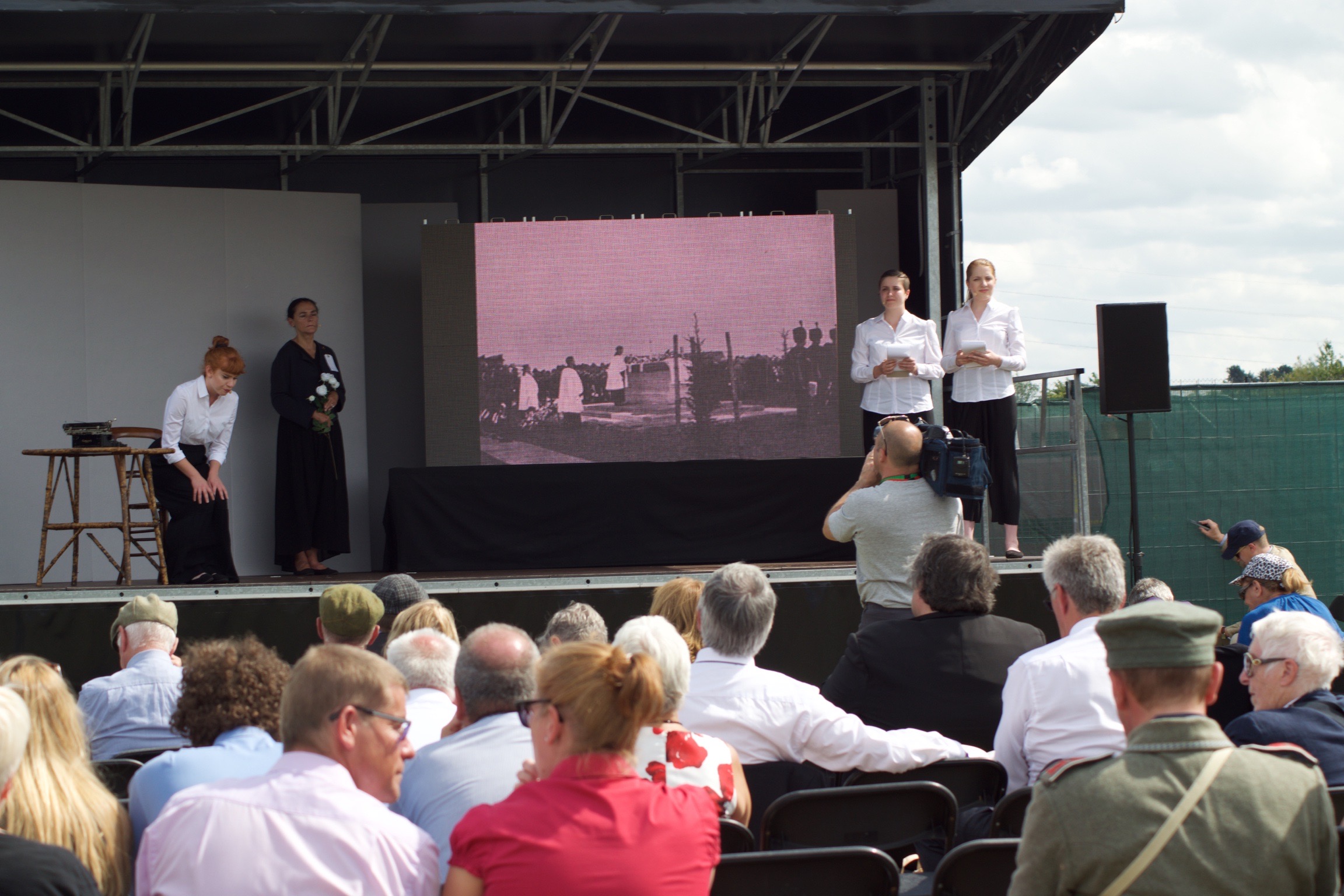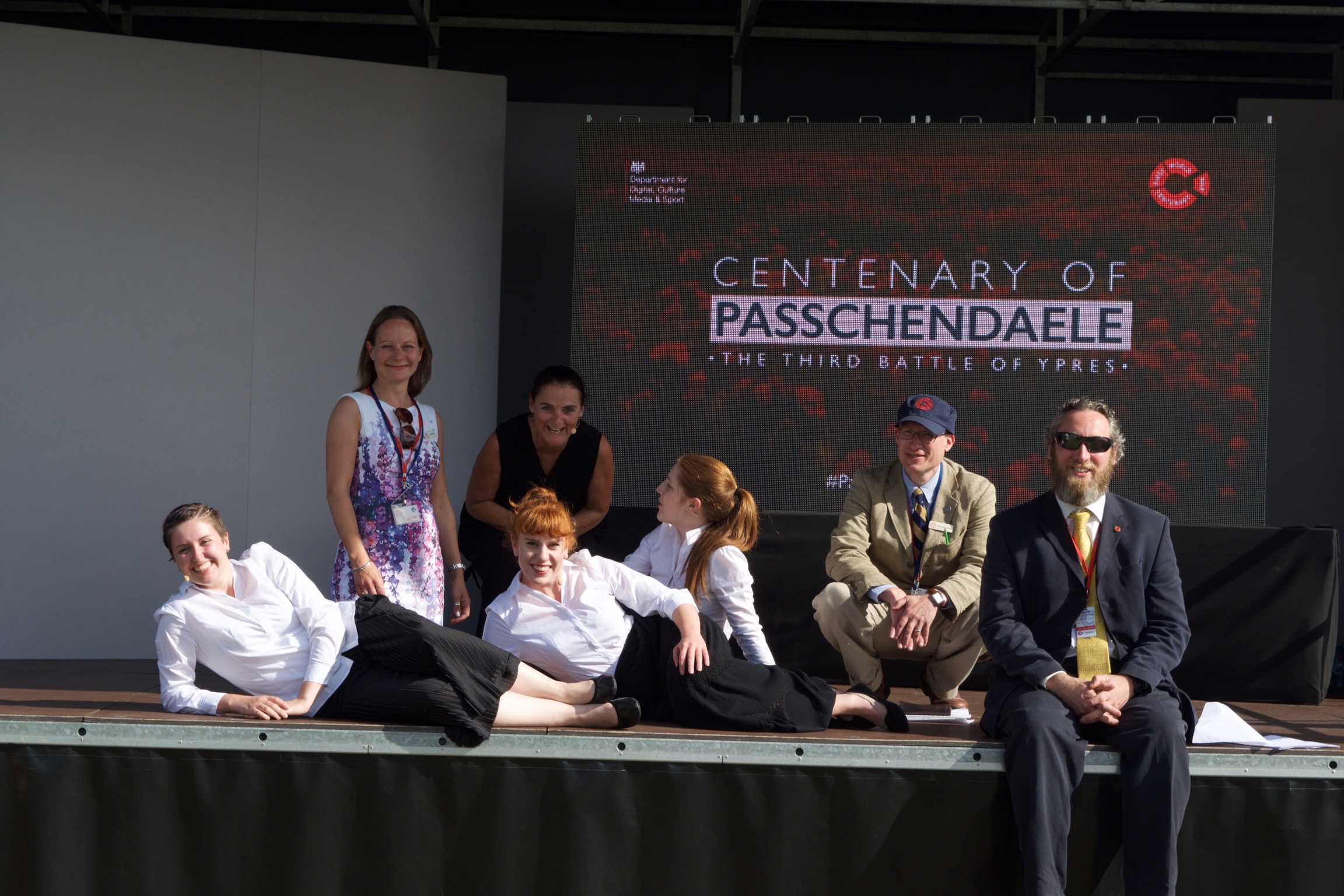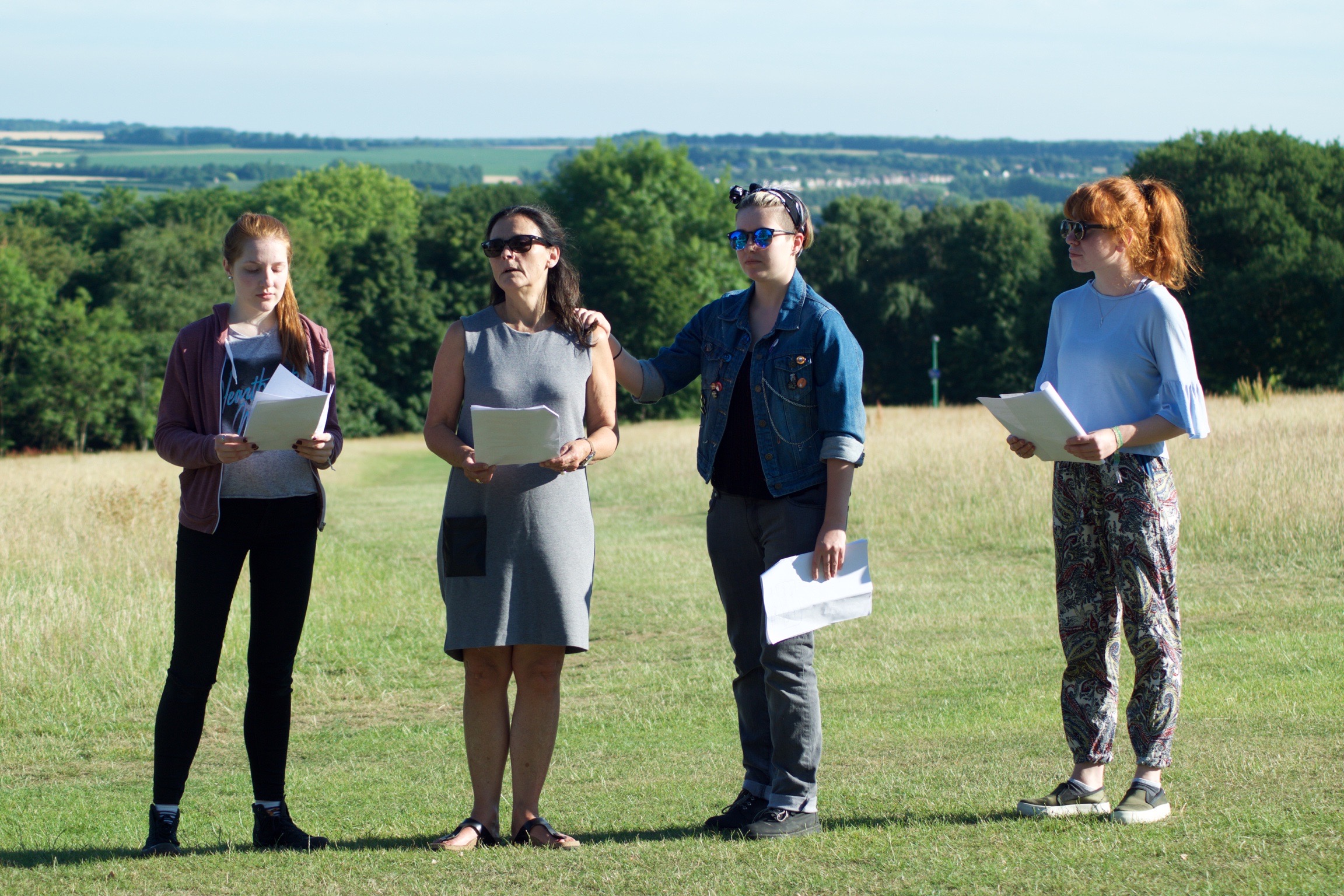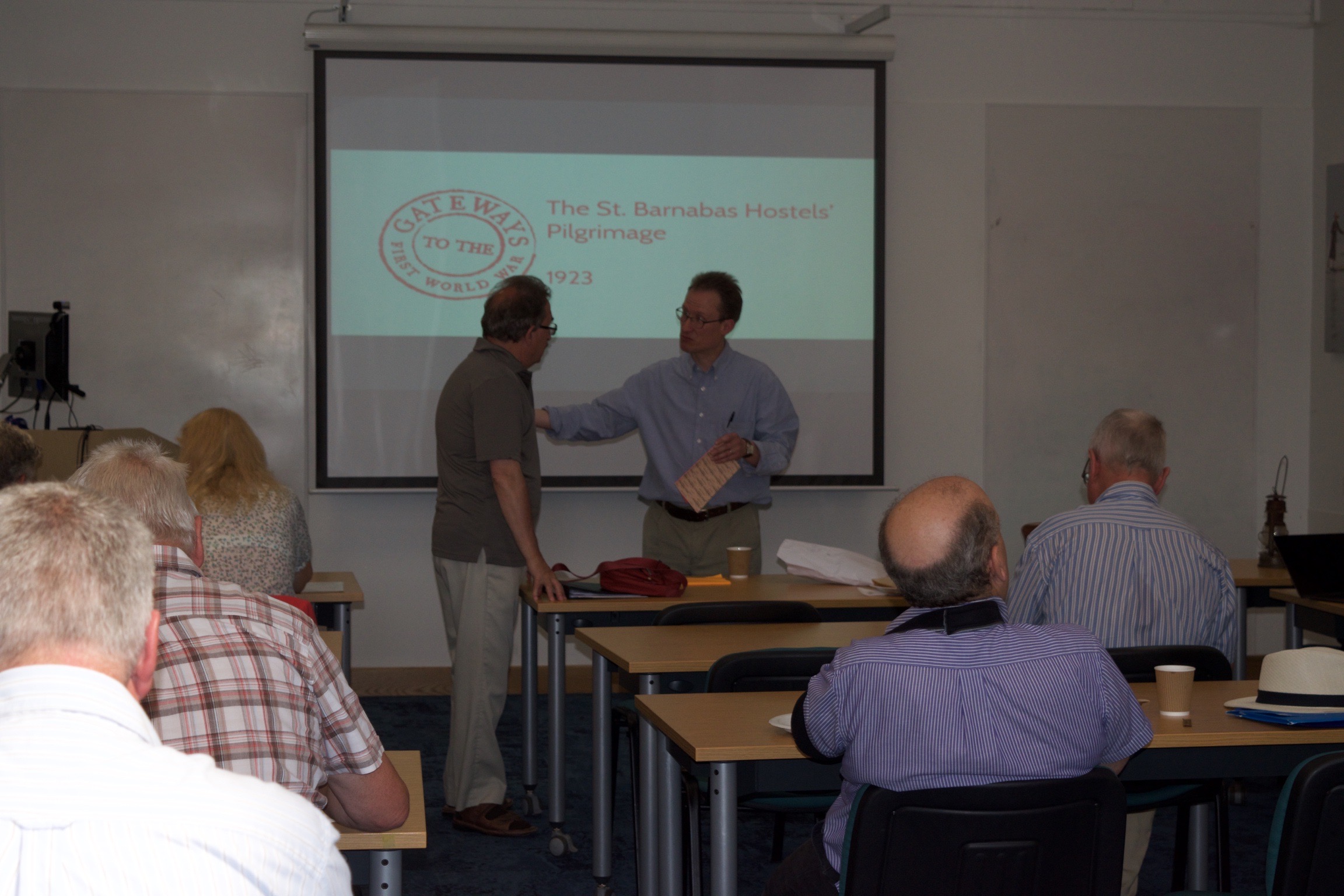The St. Barnabas Pilgrimage, 1923: a dramatized reading.
Every word spoken in this dramatization was drawn from a historical sources. The readings were accompanied by sound and images. The main participants were drama students from the School of Arts, University of Kent.
The dramatization was created after workshops with volunteers helped us establish themes and approaches. From this point, the production team investigated and identified sources before editing them into a narrative and script. The performance explored a pilgrimage of the bereaved organised and funded by the St Barnabas Society in 1923 to Lijssenthoek Cemetery in Belgium. The presentation aimed to impart the emotional atmosphere of the period and remind those attending the centenary commemorations that they were treading in the footsteps of others.
The texts
In this fifteen minute dramatized reading, all of the texts have been drawn from St. Barnabas Pilgrimages, 1923 (London: Eyre and Spottiswoode, n.d.). Extracts from the book include material from the Daily Express coverage of the pilgrimage; the testimony of Mrs William McLean to the People’s Journal, and Mary Macleod Moore’s account for the Toronto Saturday Night. Macleod Moore was the London correspondent for the paper and the Montreal Gazette. During the war she had reported from France and Belgium having forced her way through the army’s laborious accreditation system, and in 1919 she published a history of Canadian Red Cross services during the conflict. Major B.S. Browne was a member of the Christian movement, Toc H, which was founded by the Reverend P.B. ‘Tubby’ Clayton, at Poperinghe [now Poperinge], during the war, and the Ypres League.
Illustrations were drawn from St. Barnabas Pilgrimages, 1923; the Illustrated London News; W.W. Murray (ed.), The Epic of Vimy (Ottawa: The Legionary, 1936); Fabian Ware, The Immortal Heritage (Cambridge: Cambridge University Press, 1937); British War Cemeteries (London: Ypres League, 1927).
